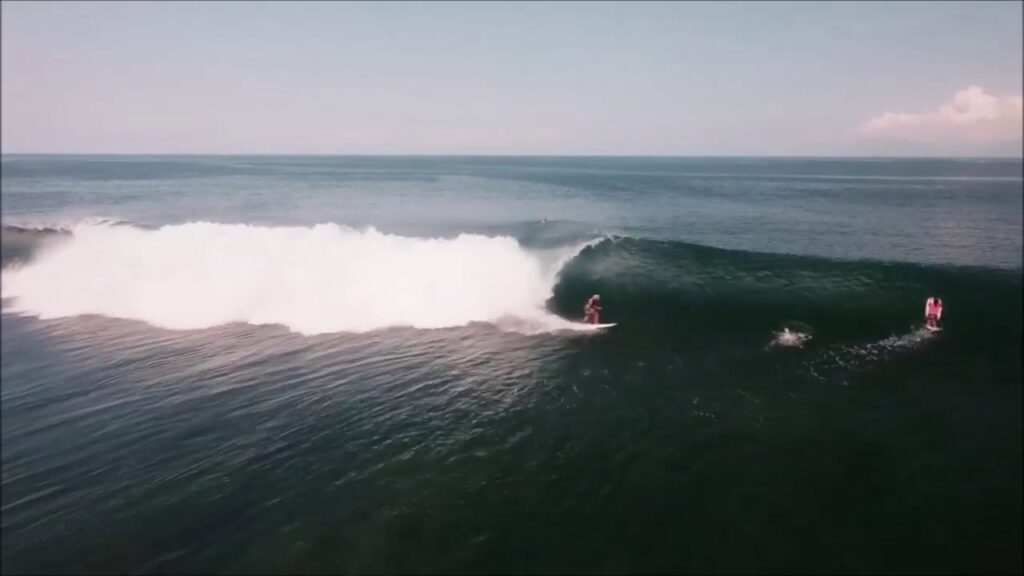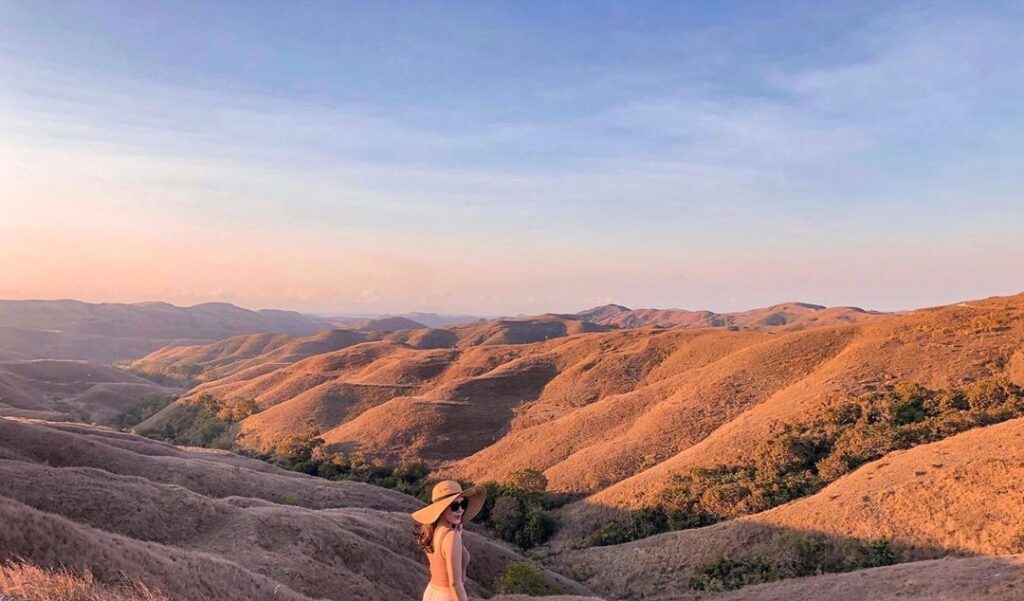Sumba Island is a picturesque and rugged island located in the eastern part of Indonesia, part of the Lesser Sunda Islands. The island is known for its rich and unique cultural traditions, stunning natural landscapes, and warm hospitality.
Sumba Island is characterized by its rolling hills, grasslands, and rugged coastline, with stunning white sand beaches and turquoise waters. The island’s natural beauty is complemented by its rich cultural heritage, with traditional Sumbanese houses, intricately woven textiles, and unique ceremonial traditions that have been passed down for generations.
The island’s people, the Sumbanese, are known for their warm hospitality and welcoming nature. Visitors to Sumba Island can expect to be greeted with open arms, and to have opportunities to learn about the island’s traditions and way of life through interactions with locals.
Sumba Island offers a slower pace of life, with a more laid-back and relaxed atmosphere than many other parts of Indonesia. Visitors can enjoy outdoor activities such as hiking, swimming, surfing, and snorkeling, as well as exploring traditional villages, local markets, and cultural centers.
Getting There
The easiest way to reach Sumba Island is by taking a flight from Bali’s Ngurah Rai International Airport to Tambolaka Airport in Waikabubak or Umbu Mehang Kunda Airport in Waingapu. Flights run daily and take around an hour. From there, you can take a taxi or rent a car to get around the island.
What to expect
- Authentic culture: Sumba Island is known for its rich and unique cultural traditions, which are still very much alive and celebrated today. Visitors can expect to see traditional Sumbanese houses, intricately woven textiles, and witness ceremonies and festivals that are unique to the island.
- Stunning landscapes: Sumba Island is blessed with stunning natural landscapes, from rolling savannahs to rugged coastlines and white sandy beaches. Visitors can expect to see breathtaking vistas and have opportunities for outdoor activities such as hiking, swimming, surfing, and snorkeling.
- Traditional cuisine: Sumbanese cuisine is known for its use of fresh and locally sourced ingredients, as well as unique flavors and spices. Visitors can expect to try dishes such as Manukang Sayur, Sambal Kolo, and Ikan Bakar, as well as other Indonesian and international cuisine.
- Warm hospitality: Sumbanese people are known for their warmth and hospitality towards visitors. Visitors can expect to be welcomed with open arms and to have opportunities to interact with locals and learn about their way of life.
- A slower pace of life: Sumba Island is a laid-back and relaxed destination, where the pace of life is slower than in more developed areas of Indonesia. Visitors can expect to take their time and enjoy a more leisurely travel experience, with opportunities to unwind and disconnect from the stresses of modern life.

Things to See and Do
- Visit Traditional Villages: Sumba Island is home to many traditional villages, where you can witness the unique culture and customs of the Sumbanese people. Each village has its own distinct characteristics, architecture, and rituals. Some of the most famous villages are Kampung Tarung, Kampung Raja Prailiu and Wainyapu.
- Explore Waterfalls: Sumba Island is known for its beautiful waterfalls, which are great for swimming and taking in the natural beauty of the island. The most popular waterfalls are the Tanggedu Waterfall, Waimarang Waterfall, Matayangu waterfalls and many more.
- Surfing: Sumba Island has some of the best surf spots in Indonesia, with world-class waves for surfers of all levels. Some of the most popular spots include Nihiwatu Beach, Marosi Beach, and Lakey Peak.
- Beaches: Sumba Island has some of the most beautiful and pristine beaches in Indonesia, with crystal clear waters and white sand. Some of the most popular beaches include Mandorak Beach, Tanjung Mareha Beach, and Bwanna Beach.
- Attend a Pasola Festival: Pasola is a traditional ritual performed by the Sumbanese people, where two groups of horsemen throw spears at each other. The festival takes place in several locations across the island, and the exact dates depend on the lunar calendar ( usually on February – March on callendar ). It’s an exhilarating experience that offers a glimpse into Sumba’s unique cultural heritage.
Where to Stay
Sumba Island offers a range of accommodation options to suit every budget, from luxury resorts to budget guesthouses.
- Nihi Sumba Island Resort: Nihi Sumba Island Resort is a world-renowned luxury resort that offers breathtaking views, world-class amenities, and exceptional service. The resort has a private beach, an infinity pool, a spa, and several restaurants and bars. The rooms are spacious and beautifully decorated, with private terraces or balconies that offer stunning views of the ocean or the lush tropical gardens.
- Sumba Nautil Resort: Sumba Nautil Resort is a boutique resort located on a private beach in Sumba’s southwestern coast. The resort offers a unique blend of luxury and traditional Sumbanese culture, with beautifully appointed rooms and villas that feature local materials and design elements. The resort also has a spa, a restaurant, and a pool with a swim-up bar.
- Lelewatu Resort Sumba: Lelewatu Resort Sumba is a five-star resort that offers luxury villas and suites with breathtaking views of the ocean and the surrounding hills. The resort features a private beach, a spa, a restaurant, and a bar, as well as a range of activities such as yoga, cooking classes, and cultural tours.
- Mario Hotel and Cafe: Mario Hotel and Cafe is a budget-friendly option located in Waingapu, the capital of East Sumba. The hotel offers comfortable rooms with air conditioning, free Wi-Fi, and flat-screen TVs. The hotel also has a restaurant that serves local and international cuisine, as well as a rooftop terrace that offers panoramic views of the city.
- Bobocabin Umarato Sumba: Located in East Nusa Tenggara, Sumba Island never ceases to amaze the tourists with its limitless charm. The beautiful sands all over the coast, the bright and clear sky, combined with the modern facilities of Bobocabin will surely keep you company during your vacation with dearest friends, family, or your significant other.

Places must visit
- Weekuri lagoon: Weekuri lagoon is a stunning crystal-clear lake located in the village of Kalenarogo, near Waikabubak. The lake is surrounded by limestone cliffs and has a white sandy bottom, making it an ideal spot for swimming and snorkeling. Visitors can rent a boat or swim in the lake and enjoy the beautiful scenery.
- Tanjung Mareha: Tanjung Mareha is a beautiful cape located on the western coast of Sumba Island, near Kodi. The cape offers breathtaking views of the Indian Ocean, with rugged cliffs and rocky outcrops. Visitors can hike to the top of the cape to enjoy the view or explore the nearby beaches and coves.
- Puru Kambera Savannah: The Puru Kambera Savannah is a vast grassland located in the eastern part of Sumba Island, near Waingapu. The savannah offers stunning views of the rolling hills, with herds of wild horses roaming free. Visitors can explore the area on foot or by horseback, and enjoy the picturesque landscape.
- Waikabubak: Waikabubak is the capital of West Sumba, and is known for its traditional Sumbanese houses and culture. Visitors can explore the village and visit the local markets, where they can find hand-woven textiles, carvings, and other handicrafts. The village is also home to several museums and cultural centers, where visitors can learn about the history and traditions of Sumba Island.
- Waimarang Waterfall: Waimarang Waterfall is a stunning waterfall located in the village of Prai Ijing, near Waingapu. The waterfall is surrounded by lush vegetation and has several tiers, with a pool at the bottom where visitors can swim. The area is also known for its hot springs, which are believed to have healing properties.
Sumba Island offers a unique and authentic travel experience, with stunning natural beauty, rich cultural traditions, and warm hospitality, making it a true gem of Indonesia.
